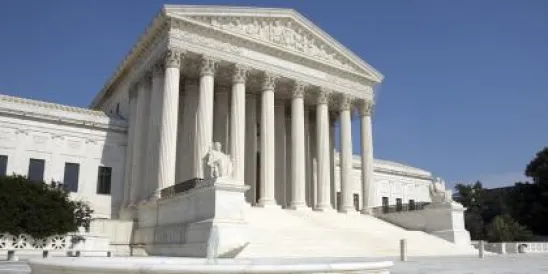The Supreme Court of the United States has recently announced that they will be reviewing the standard for willful patent infringement in two cases currently on appeal from the Federal Circuit: Halo Electronics, Inc. v. Pulse Electronics and Stryker Corporation v. Karl Stroz Endoscopy-America, Inc. Their decision in these cases will govern the ability of patent owners to obtain enhanced damages (i.e., triple damages) under 35 U.S.C. § 284 where willful patent infringement is determined to exist.
Under 35 U.S.C. § 284, a patent holder is entitled to claim damages no less than a “reasonable royalty”[1] for the use made of the invention by the infringer together with interest and costs as fixed by the court. The same section further allows the court to increase the award up to three times the amount of actual damages (i.e., triple damages)[2] based on a finding of willfulness.
The current standard for awarding enhanced damages due to willful patent infringement was established in 2007 inIn re Seagate Technology, LLC.[3] Seagate overturned what was at that time a twenty-four year old precedent[4]imposing an affirmative duty on the accused infringer to show lack of willfulness by, inter alia, taking certain affirmative steps once notice had been provided as to the existence of the patent and the accused activity. Obtaining a patent opinion from counsel, for example, regarding non-infringement, invalidity, or unenforceability had been factors in determining whether the infringement was considered willful. Such precedent seemed to place the burden of proof on the defendant to show non-willfulness, whereas the burden of proof for proving willfulness is generally required of the plaintiff in other areas of law.
Seagate thereby shifted the burden of proof back to the patent owner, who must then show that any infringement was willful. Furthermore, the Seagate Court established a two-prong test for willfulness: (1) the patent owner must first show that there was an objectively high likelihood that the accused infringer’s actions constituted infringement of the patent owner’s patent, and (2) the patent owner must also show that the likelihood of infringement was either known or so obvious that it should have been known by the infringer.[5]
Recent signs have indicated a shift to a looser approach to applying the standard for willfulness. Two Federal Circuit judges have separately noted, for example, that the current standard for willfulness established withSeagate appear analogous to the standard overruled in the Octane Fitness decision by the Supreme Court just last year.[6] Octane Fitness had held that such a standard was too restrictive and that judges should be able to decide to award attorney’s fees when a case “stands out from others” after review of the totality of the circumstances.[7]
If the Supreme Court were to follow a similar line of reasoning in Halo and Stryker, an adjustment to the standard for finding willful patent infringement would appear likely. In contrast to the rigid, two-prong test of Seagate, theOctane Fitness guidelines would allow more leeway for judges to find willfulness based on a totality of the circumstances. If so, patent owners would have significantly better odds of obtaining enhanced damages from potential infringers in litigation, as well as more leverage in licensing negotiations.
[1] What is considered a “reasonable royalty” can be based on expert testimony.
[2] It should be noted that enhanced damages under this section do not apply to provisional rights under 35 U.S.C. § 154(d).
[3] 497 F.3d 1360 (Fed. Cir. 2007)
[4] Underwater Devices Inc. v. Morrison-Knudson Co. 717 F. 2d 1380 (Fed. Cir. 1983).
[5] In a later decision, the Federal Circuit also held that the objective risk prong of willfulness must always be determined by a judge presiding over the case. Bard Peripheral Vascular, Inc. v. W.L. Gore & Assocs., Inc., 670 F.3d 1171 (Fed. Cir. 2012). Meanwhile, only the question as to whether the risk was known can be determined by a jury. Such decisions further made it harder for findings of willfulness to be found.
[6] Both Judges O’Malley and Hughes (in the concurrence) urged the Supreme Court to re-evaluate the standards for enhanced damages in view of the decision in Octane Fitness. Halo Electronics, Inc. v. Pulse Electronics (Fed. Cir. 2015)
[7] Octane Fitness LLC, v. ICON Health & Fitness, Inc., 12-1184 (2014)



 />i
/>i

